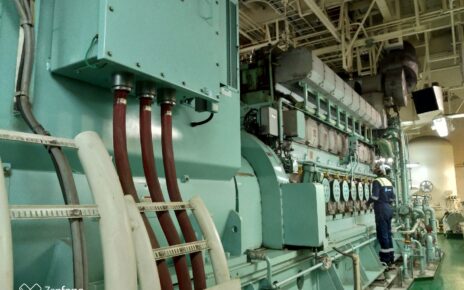What is Decarbonisation in shipping? Briefly discuss the IMO decarbonisation ambitions and pathways with focus on the short term, mid-term and long term goals. Explain the two short-term measures approved by the IMO for implementation with their guidelines.
What is Decarbonisation in shipping
Decarbonisation is the process of reducing and eventually eliminating carbon dioxide and other greenhouse gas emissions across the shipping industry. Led by the IMO, the industry has committed to a 50% reduction in the emission of all greenhouse gases by 2050 (compared to 2008 levels). This is a challenging task, as shipping is considered to be the backbone of the global economy, accounting for about 80% of the volume of global trade. However, it is also a necessary one, as shipping is one of the harder-to-abate sectors, which represent 30% of global CO2 emissions.
To achieve its decarbonisation goals, the IMO has adopted a three-tiered approach: short-term measures, mid-term measures and long-term measures. These measures aim to improve the energy efficiency and reduce the carbon intensity of existing and new ships, as well as to promote the development and uptake of low-carbon and zero-carbon fuels.
The short-term measures are expected to be implemented between 2023 and 2026. They include two main components: the Energy Efficiency Existing Ship Index (EEXI) and the Carbon Intensity Indicator (CII).
The EEXI is a technical measure that requires ships to meet a minimum energy efficiency level, depending on their type and size. The EEXI is calculated by comparing the ship’s CO2 emissions per transport work with a reference value. The reference value is based on the average performance of ships built between 2012 and 2018. Ships that do not meet the EEXI requirement will have to implement technical modifications or operational changes to improve their energy efficiency.
The CII is an operational measure that requires ships to reduce their carbon intensity, which is defined as the CO2 emissions per transport work. The CII is calculated by using a formula that takes into account the ship’s annual CO2 emissions, deadweight tonnage, distance travelled, and cargo carried. The CII will be rated on a scale from A to E, where A represents the best performance and E represents the worst. Ships that are rated D for three consecutive years or E for one year will have to submit a corrective action plan to improve their carbon intensity.
The mid-term measures are expected to be implemented between 2026 and 2030. They include possible market-based measures (MBMs) that aim to provide economic incentives for ships to reduce their greenhouse gas emissions. MBMs could take various forms, such as carbon pricing, emission trading schemes, fuel levies or port fees. The IMO is currently conducting an impact assessment of different MBM options and will decide on their feasibility and implementation by 2023.
The long-term measures are expected to be implemented after 2030. They include possible regulatory measures that aim to facilitate the transition to low-carbon and zero-carbon fuels. These fuels could include advanced biofuels, hydrogen-based fuels (such as ammonia or methanol), synthetic fuels (such as e-fuels or electrofuels) or other alternative fuels (such as liquefied natural gas or nuclear power). The IMO is currently developing a comprehensive strategy for the development and deployment of these fuels, taking into account their availability, affordability, safety and environmental impacts.
In conclusion, decarbonisation in shipping is a complex and urgent challenge that requires coordinated action from all stakeholders in the shipping industry and beyond. The IMO has set ambitious targets and pathways for achieving them, but they also require innovation, investment and collaboration from ship owners, operators, builders, designers, fuel suppliers, ports, regulators and customers. By working together towards a common vision of a sustainable and resilient shipping sector, we can contribute to the global efforts to combat climate change and ensure a prosperous future for generations to come.



